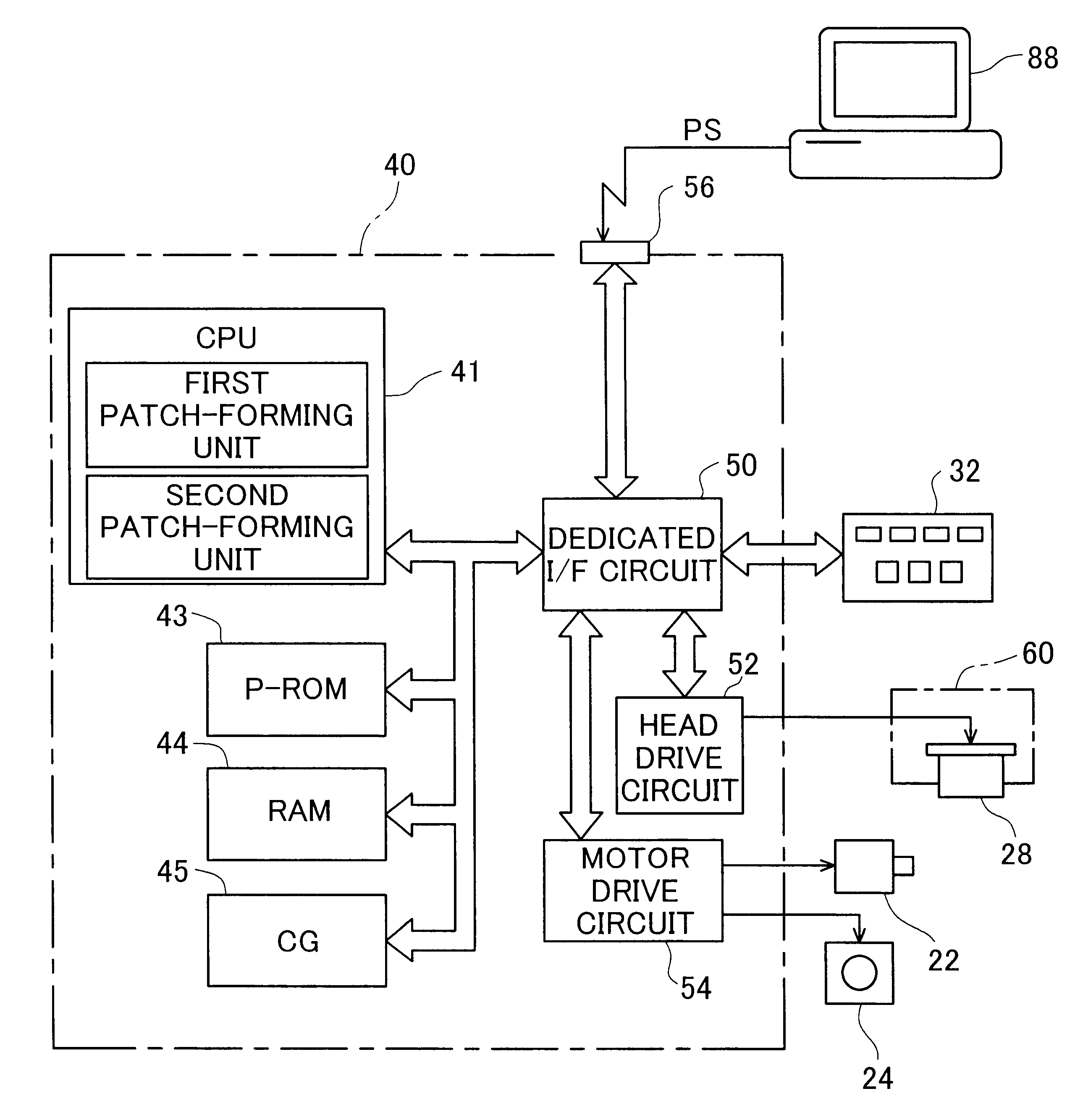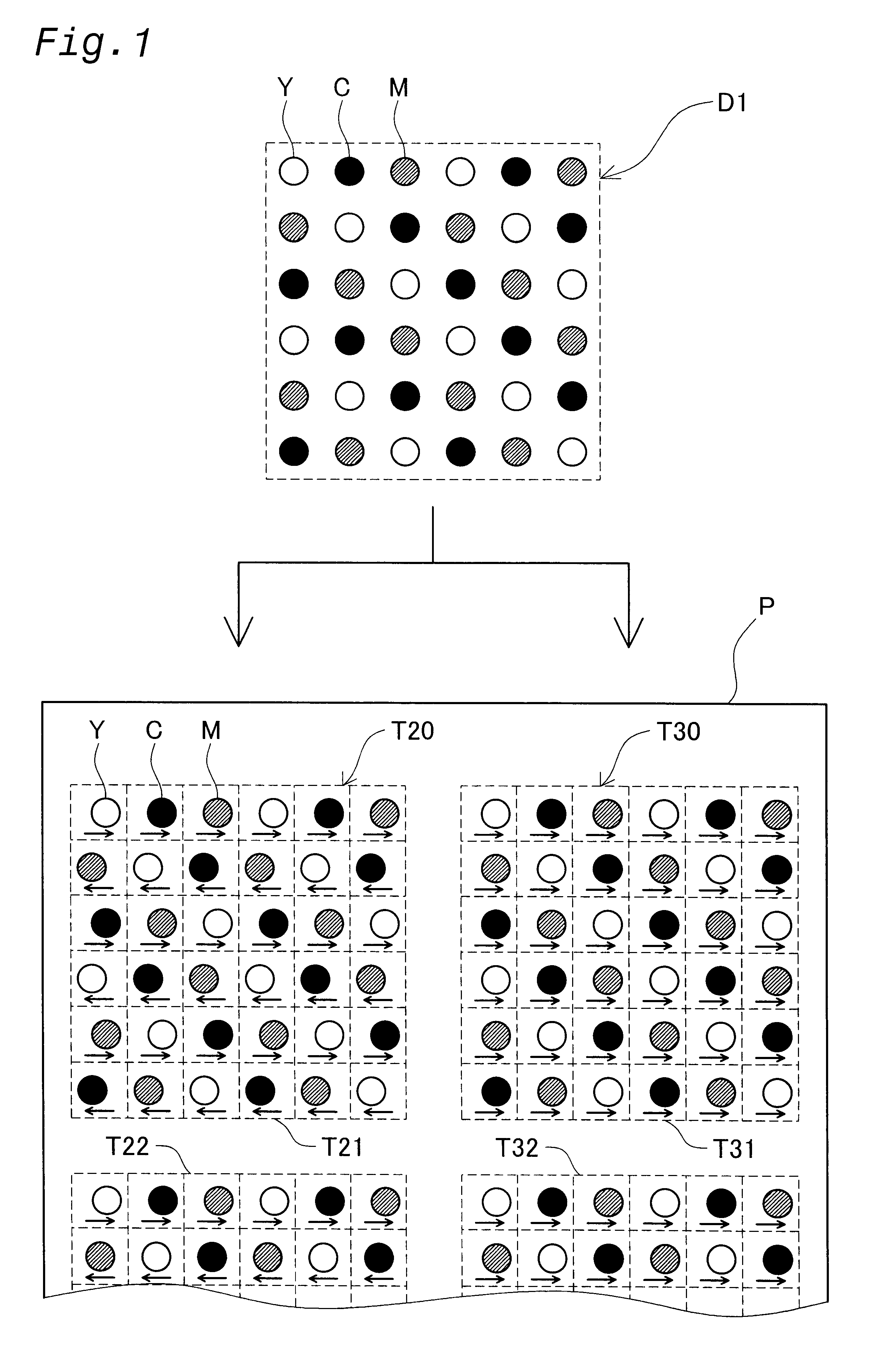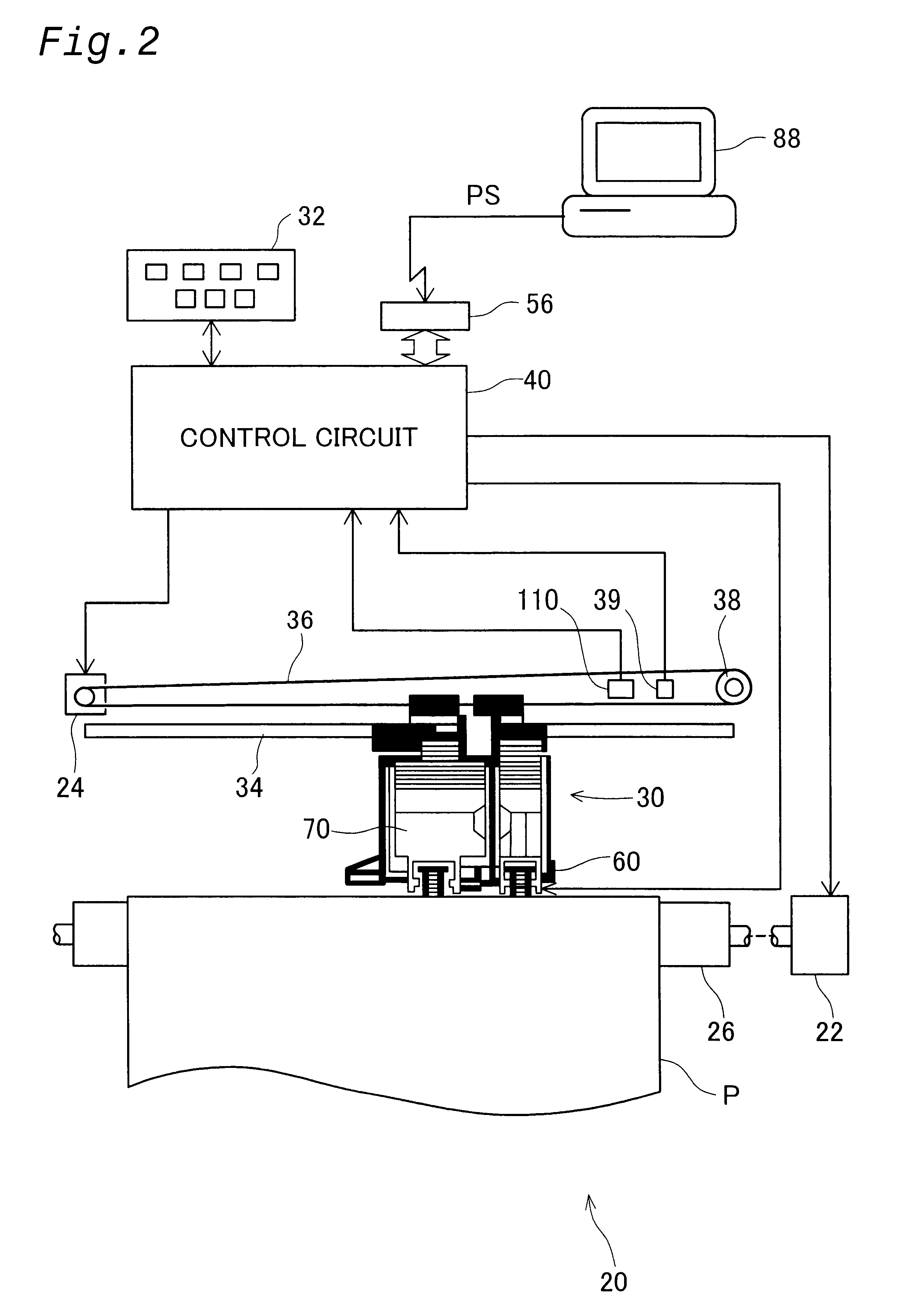Determining adjustment value for recording position deviation at printing using a plurality of kinds of inspecting patterns
a technology of recording position deviation and adjustment value, which is applied in the direction of printing mechanism, spacing mechanism, printing, etc., can solve the problems of difficult to reduce such graininess in printed images, and printed images sometimes become grainy in color printing
- Summary
- Abstract
- Description
- Claims
- Application Information
AI Technical Summary
Benefits of technology
Problems solved by technology
Method used
Image
Examples
first working example
D. First Working Example
FIG. 6 is a flowchart depicting the entire routine performed in accordance with the first working example of the present invention. In step S1, a first misalignment verification pattern and a second misalignment verification pattern are formed. In subsequent step S2, the operator sets an adjustment value on the basis of the first and second misalignment verification patterns, and enters the information into the printer 20. A detailed description of each step follows.
FIG. 7 is a diagram depicting an example of a first misalignment verification pattern T20. In step S1 (see FIG. 6), a first misalignment verification pattern is printed by the printer 20. The first misalignment verification pattern T20 is composed of a plurality of gray patches T21-T25 printed on the forward and reverse passes by light-cyan, light-magenta, and yellow nozzle rows. Each gray patch is designed to reproduce the same color. The gray patches T21-T25 correspond to "the first gray patches...
second working example
E. Second Working Example
According to the first working example, color patches are formed based on the same image data by bidirectional printing and unidirectional printing, the two are compared, bidirectionally printed patterns whose print results have the highest quality are selected, and adjustment values are set. According to a second working example, color patches are formed based on two separate types of image data about each adjustment value, and adjustment values capable of delivering adequate print results are determined for both images. Separate description are given below for bidirectional printing and unidirectional printing.
(1) Bidirectional Printing
FIG. 13 is a plan view depicting a first misalignment verification pattern T20 and a second misalignment verification pattern T40 on printing paper P. The first misalignment verification pattern T20 and second misalignment verification pattern T40 are formed on printing paper P in the same manner as shown in FIG. 8, but the ...
modification 1
F1. Modification 1
FIG. 16 is a plan view depicting a first misalignment verification pattern T20a and a second misalignment verification pattern T30a on printing paper P according to a modification. An adjustment value can be set with consideration for the quality degradation of print results due to errors affecting sub-scanning / feeding if the patches are extended in the direction of sub-scanning, as shown in FIG. 16. The patches T21a-T25a and T31a-T35a (T23a-T25a or T33a-T35a are not shown) should preferably be formed across at least one fourth of the printable area on the printing paper in the direction perpendicular to the direction of main scanning. Forming the patches within this range allows these patches to fully reflect the errors affecting sub-scanning feed when images are printed in the printable area. In this case, a smaller number of patches can be formed on a single sheet of printing paper, but forming the patches on a plurality of sheets of printing paper makes it poss...
PUM
 Login to View More
Login to View More Abstract
Description
Claims
Application Information
 Login to View More
Login to View More - R&D
- Intellectual Property
- Life Sciences
- Materials
- Tech Scout
- Unparalleled Data Quality
- Higher Quality Content
- 60% Fewer Hallucinations
Browse by: Latest US Patents, China's latest patents, Technical Efficacy Thesaurus, Application Domain, Technology Topic, Popular Technical Reports.
© 2025 PatSnap. All rights reserved.Legal|Privacy policy|Modern Slavery Act Transparency Statement|Sitemap|About US| Contact US: help@patsnap.com



